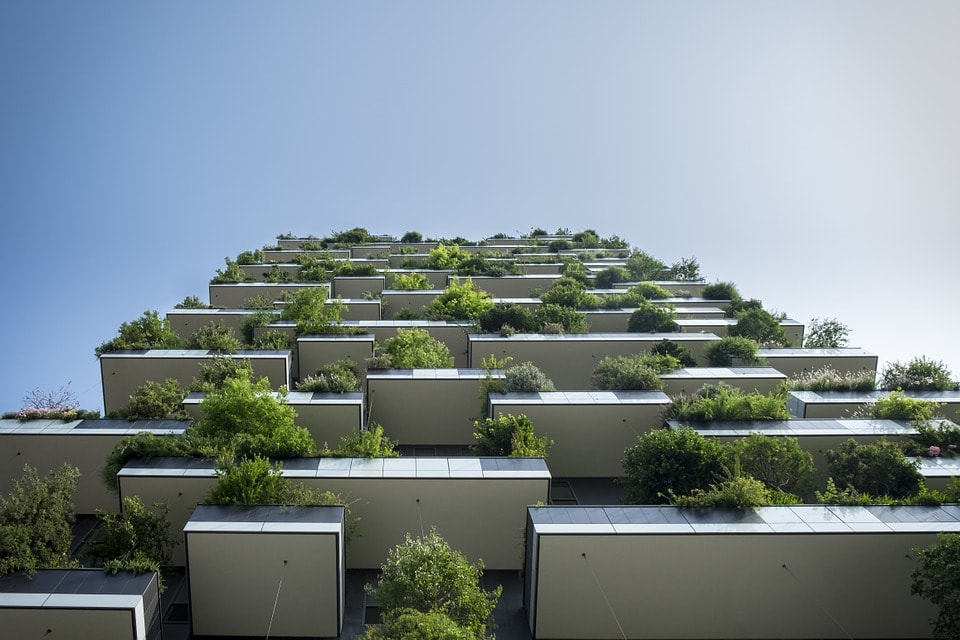
Portella’s 5 Favorite Trends in Architecture
1. Greenspace & Nature-inclusive Projects
Architecture has always been concerned with nature. Either how to oppose it, and jut out from the earth, or how to blend in and be inspired by the natural world. As cities grow and edge out the natural world, there has been a push to bring nature inside, and make it a part of new architectural designs. From green spaces on top of skyscrapers to vertical farms, incorporating plants and recycled material into new structures has become a lot more common. It’s a way to reconcile the space a constantly growing population inhabits and the preservation of natural beauty.
On a smaller scale, many office spaces and shared spaces are seeing walls of foliage or indoor gardens. It brings together the soft and natural vibrancy of nature and the sleek, livable experience that a lot of spaces are aiming for. Architecture is interesting because it brings together art and functionality. People live and work and exist inside these structures, so it seems only natural that a growing trend of green inclusion comes on the heels a generation that puts a lot of stock in environmental design.
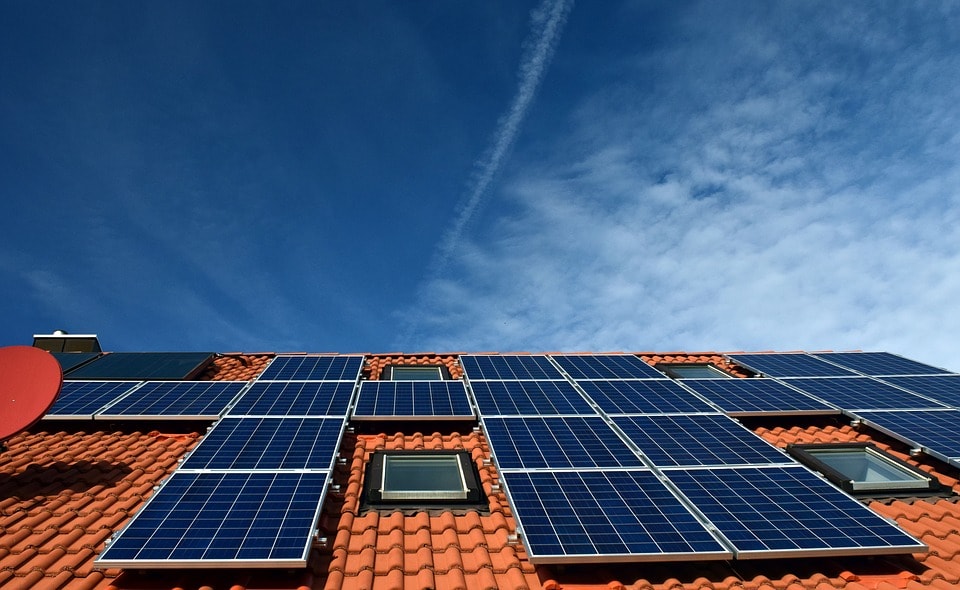
2. Sustainable Architecture
Alongside tree-topped buildings and fern furnished offices, there’s been a big push for sustainable techniques in new structures. New technologies are constantly being developed, and with a huge shift in focus toward energy efficient design, things like windows, heating/cooling systems, and even insulation materials are seeing innovative new forms. Generally, there are two parts of this sustainable front: the materials and the design.
For the materials, it’s a lot of of new technology. From Japanese innovation in concrete to smart homes that monitor and regulate energy consumption or manipulate temperatures. As tech advances, it opens up new opportunities in design and incorporating techniques that might have been limited previously. With a number of companies and consumers taking a more active role in conservation efforts, sustainable building is a logical next step.
For design, people are adopting the mentality of open, integrated, and social. By opening up space for things like solar panels, by taking into account the natural resources and ecology of the building site, by making use of sustainable materials from the surrounding environment, architects designing a huge variety of new structures and styles. The interconnectivity of place, planet, and building is becoming an increasingly significant factor, and it’s producing some truly stunning work.
Photo Credit: Ranch Office
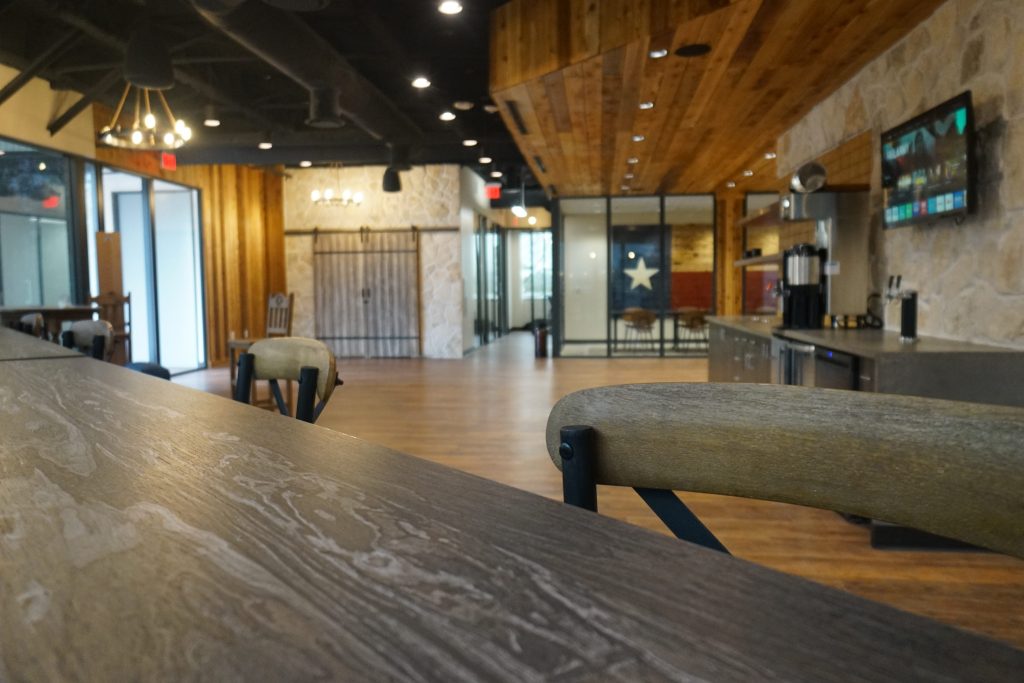
3. Social Space: Co-working, Public Space, and More
In the last few years, one of the more interesting trends is a movement towards shared space. Co-working is a great example. Businesses, freelancers, and work-from-home professionals have turned to an office experience that is communal in nature. It reduces overhead costs, it offers social and professional networking opportunities, and it reinforces a conservation of space that more traditional office plans don’t accommodate. Open office plans, and even more open public spaces are in style now as well. The seemingly paradoxical relationship between open spaces and conservation of space starts to make sense when you imagine how people are interacting with the world around them.
Social media is a standard part of most people’s lives, and with a shift towards urban living overtaking suburban or rural living, people spend a lot of time around other people. It’s pretty common sense, but as populations trend towards that urban landscape, the architecture is evolving alongside. Spaces are more open, and cities are occupying more space, but more people are sharing that space. Transportation hubs like airports and train stations, shared office spaces, new designs for businesses are all seeing architecture that supports and engenders social interaction or at the very least, social overlap.
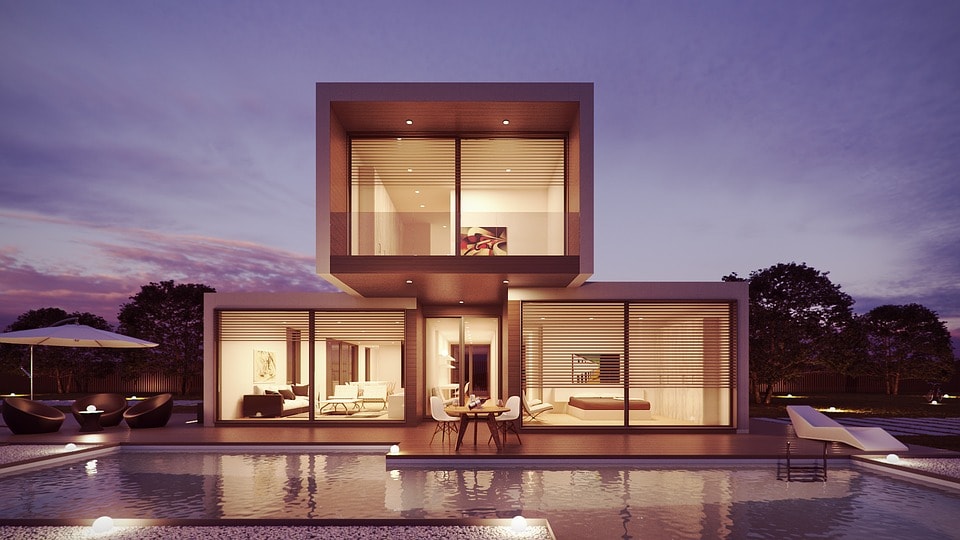
4. Compact Design
Small spaces have become a particularly interesting area of development. Beyond the trendy nature of something like miniature houses, people are looking to do more with less. At the same time, there’s a push to preserve the image of space, offsetting the isolation a particularly small area can create. Driven by the same urban growth and an interest in reducing the footprint and cost of traditional living spaces, architecture is seeing a number of designs that address these needs.
Architects have plenty of solutions, but there are two standout features that most people will recognize. Building up and windows. Building up is a really fascinating process because it preserves the total space of a place, redistributing it in new and interesting ways. A blend of interior design and architecture, designers are forced to find little pockets of space that might have previously gone unutilized, and it occasionally gives rise to really wonderful structures. Windows, on the other hand, offer a sort of illusory space. Natural light and unique window shapes or placements can open a room to the sky or the surrounding area, even if it doesn’t actually increase the square footage of a room. Some of the most popular examples of these design techniques are seen in densely populated locations, where space is at a premium.
In an alleyways and tightly packed Tokyo neighborhoods, you can find some excellent structures that exemplify these traits. Concrete and glass structures that pack a whole home into a space that people might never imagine living in. In both cases, the use of natural light and stacked rooms offers plenty of room to live without taking up as much physical space.
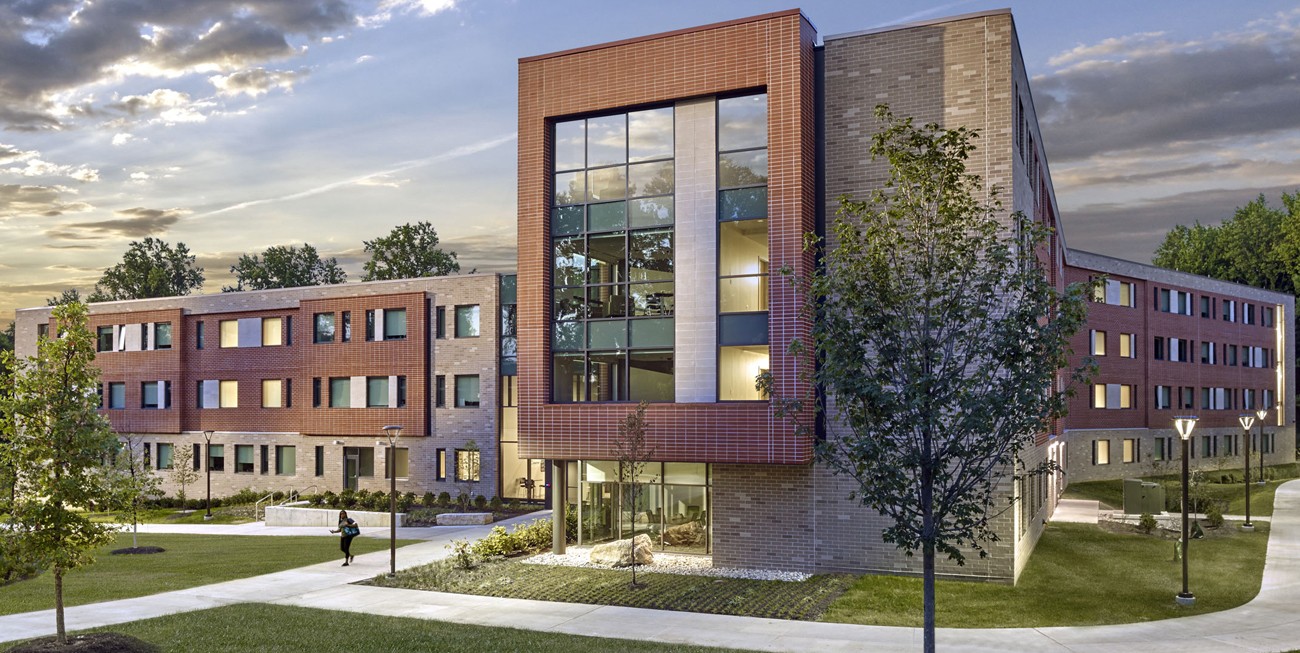
5. Shifting Focus, How Space is Used
This trend is interesting because it seems so obvious. Architecture is art. And art is generally the summary or the response to society. Encompassing all of the other trends on this list, this trend is more of a continuing feature. As the industry of architecture advances, it seems to be considering more and more frequently the actual functionality of the structures it creates.
That is to say, buildings are being built and designed with the ecosystem in mind, with community driven living in mind, with a whole host of generational changes taking place and having a real impact on what cities and buildings and man-made geographical features look like. With new technologies, sci-fi shapes and tools are a thing of today, not tomorrow. People care about the materials their buildings are made of, they want to mingle their existence with nature rather than pave over it. The trend is change.
Designs are more bold, but also more considerate. As we push forward and develop new possibilities, the places we inhabit will change too. It’s extremely interesting to imagine what major metropolitan hubs will look like 5 years from now.
Architecture is an exciting field to watch. With so many components going into any given project, each finished structure is a marvel in its own right. What trends have you noticed over the last year, and what should everyone be looking out for? Looking forward, the landscape appears to be eco-friendly and community driven. We’re looking forward to a future of brilliant designs and beautiful works going up across the globe.
Make Portella a part of your next renovation or new architectural design. We provide high-quality steel doors, steel windows, and so much more. Find out more about us or get in touch today to see how our products can make a big difference in the look of a building’s architecture.
Leave a Reply